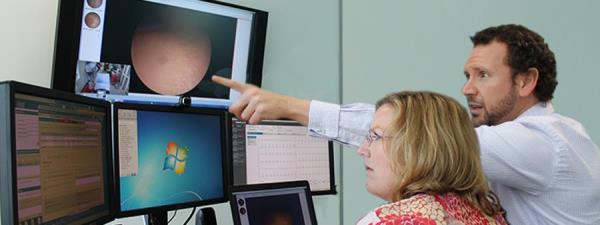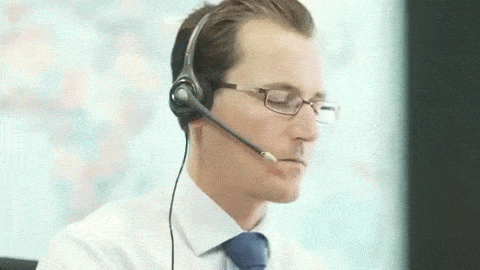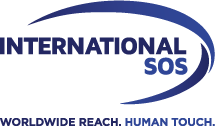30 Years of TeleHealth
Published: August 2015
TELEHEALTH: USING TECHNOLOGICAL INNOVATION TO SUPPORT CLIENTS ANYWHERE IN THE WORLD
A business traveller in an unfamiliar city might need a range of medical advice or help in accessing the local health service. A crew member on an oil rig might need emergency treatment. Today, globalisation and modern technology have dissolved traditional borders. More and more employees work in unfamiliar environments. Employers recognise they have a duty to provide assistance when needed.

Providing assistance has been at the heart of International SOS’ operations from the start. We set up our first Assistance Centres in Jakarta and Singapore thirty years ago. At that time the challenge was to install sufficient reliable phone lines. The phone was the chief communication channel between our members and Assistance Centres for many years. We were soon receiving many thousands of calls each year, especially as mobile phone use became widespread and global. Some simply asked for help in renewing a prescription or dealing with a minor ailment. Others could be seeking acute care in an emergency.
ENHANCED COMMUNICATIONS
When we started assisting remote sites the phone was again at the centre of activities. With the advent of fax and email more comprehensive information could be transmitted. It became common to ‘Store and Forward’ X-rays or ECG traces, via email. Now on-site medics could share patient cases with colleagues in our onshore Response Centres.
The introduction of video was the next step. As International SOS’ Simon Marshall, Senior Manager TeleHealth & Projects - Group Medical Assistance, explains: “It has meant patients and medics in remote locations can have a visual interaction with our medical specialists onshore. The doctor can see the patient and assess the physical signs. This makes a substantive difference.” The video and messaging system deployed became very popular. It is HIPAA compliant - thus protecting patient confidentiality - and runs on low bandwidth. Many of our medical professionals on clients’ remote offshore sites are enabled to use it – from the Arctic to Australasia.
ENHANCED DIAGNOSTICS
As the capability and coverage of satellite systems has grown globally, the connectivity and bandwidth has improved at our clients’ sites. As our clients operate in increasingly remote environments, this creates a growing opportunity to deploy sophisticated TeleHealth solutions. This enables us to overcome geographical limitations with the quality and scope of diagnostics available on site.
Being able to see a patient is an advantage but it has its limitations. Doctors’ diagnoses and treatment rely on being able to monitor the body’s vital signs. The next innovation focus was a device to measure and dynamically stream these vital signs, including: Electrocardiogram (ECG), blood oxygen levels, blood pressure and more. This has been a major step for treatment capability in acute cases.
In several extreme remote projects, we have gone a step further – providing digital X-ray systems to enhance diagnostic capability. From anywhere in the world – we can successfully transmit X-rays via satellite to specialist radiologists, allowing a specialist professional review of the images within minutes. This rapid access has enabled informed diagnosis and treatment decisions despite being hours or even days away from the nearest hospital.
To enhance basic primary care cases, we have focused on deploying high definition medical cameras and peripheral devices. Onshore doctors can now examine a remote patient’s throat, ears or eyes before recommending treatment. Thanks to these advances, patients in remote locations receive enhanced and faster treatment.
This can significantly impact the need for urgent medical transportation back to shore. Even if evacuation is required the patient receives optimal care while it is arranged. Plus, better information means the receiving medical team onshore can optimally prepare.
We currently have clients on more than 31 offshore sites using varying levels of advanced TeleHealth equipment. TeleHealth has provided a great step forward in healthcare delivery, and as International SOS’ Neil Nerwich, Group Medical Director – Assistance, points out: “It’s important to remember that any form of TeleHealth communication is only as good as the professional providing the medical input. The exceptional medical expertise that we have both in our Assistance Centres and on remote sites is fundamental. Telemedical developments have enhanced access to this expertise and that is what differentiates our superior medical assistance services.”
IN THE AIR AND OUT AT SEA
Crew members and passengers in airplanes and at sea also benefit from access to TeleHealth services. Again, communications technology has made all the difference. Ships and planes once relied on radio, now they have advanced satellite communications. Increased bandwidth means they too use more enhanced diagnostic equipment. International SOS’ MedAire emergency response service is provided by a team of emergency physicians based in Phoenix, Arizona. Our MedAire’s MedLink doctors support patients - no matter how far from the nearest port or how high up in the air - using TeleHealth capabilities.
THE WAY FORWARD
People increasingly want to use their smart phones and video to access healthcare. Being able to have virtual consultations with a doctor is growing in demand. It is expected that 18 million video consultations will take place, worldwide, in 2018.
We are already conducting a pilot at our Beijing clinic. Distance and traffic congestion mean patients can spend a lot of time just getting to the clinic. Offering the option of remote consultations is a popular initiative.
Our Assistance App is another highly useful tool and we continue to enhance it. As Philippe Arnaud, International SOS’ Group Chief Commercial Officer, points out: “The Assistance App enables our members to call the closest Assistance Centres at the push of a button based on their location. Our vision is to give members a wider range of digital options to connect with an Assistance Centre, including via our Assistance App. These are exciting times and developments are happening fast. As new technologies emerge we will continue to integrate them."
Dr Nerwich points out, “rather than automatically adopting the latest technology in every situation we use our expertise and experience to assess a complex combination of factors and tailor the best workable solutions for our clients.” Our clients may have preferences about what hardware they want and bandwidth availability is a key factor too. We need to assess what can be realistically transmitted in real time. We also take into account where each site is situated.
We weigh up all this to recommend to clients the optimum level of care on-site. We provide the right combination of medical experience, diagnostic equipment and expert telemedical onshore support. Dr Nerwich sums up: “As well as being at the forefront of technology, we have a concrete understanding of all the elements involved in operating in each particular environment. It’s all about effectiveness and expertise.”
WHAT IT MEANS
TeleHealth – using information and communication technologies to deliver healthcare services from a distance; increasingly this uses video and digital telemonitoring technologies. The term covers all health related communications between health professionals and / or patients. Certain devices are also used to monitor vital signs and transmit the results. This enhances diagnosis and decision making by doctors and specialists (such remote consultation between a doctor and an on-site medical professional, who is attending a patient, utilising these technologies is also referred to as TeleMedicine).
HIPAA Compliant - The Health Insurance Portability and Accountability Act sets standards for protecting patient information. It covers how this information is stored and shared.
The Digital Topside Support Platform

Our new digital communications platform takes TeleHealth support to a new level. It integrates a variety of communication channels into a single solution, to improve the assistance received by remote sites. Remote site medics will be able to use video and messaging as well as the phone to communicate with our Response Centres. They will be able to securely submit patient files and upload images in advance of consultations.
Information and advice will be exchanged instantly, creating fast and effective interaction. Medics will be able to schedule live calls with Response Centre doctors at mutually convenient times. They will be able to transmit information in advance then discuss cases in real time. As many of our remote cases are not emergencies, this is a far more efficient system. Of course, communication by phone remains an option, especially in urgent scenarios. The digital platform is currently being piloted in London, Johannesburg, Sydney and Rio.











